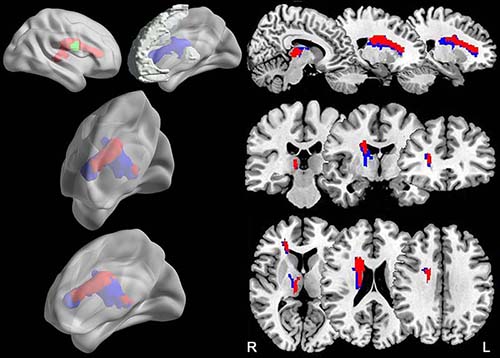Impaired Brain Pathways May Cause Attention Problems After Stroke
Findings may identify patients for early interventions to reduce cognitive decline following stroke
Damage to some of the pathways that carry information throughout the brain may be responsible for attention deficit in patients who have had a subcortical stroke in the brain’s right hemisphere, according to a new study in Radiology.
More than one-third of patients experience cognitive decline after a stroke, including attention deficit.
“Impairment of attention has been observed in patients with both cortical and subcortical stroke,” said senior study author Chunshui Yu, MD, from the Department of Radiology at Tianjin Medical University General Hospital in Tianjin, China. “In cortical stroke, the direct involvement of cortical regions associated with attention may account for the deficit. However, the parts of the nervous and brain systems underlying attention deficit in subcortical stroke remain largely unknown.”
To investigate the mechanisms underlying attention deficit in chronic subcortical stroke, Dr. Yu and colleagues combined voxel-based lesion-symptom mapping (VLSM) and diffusion tensor tractography (DTT) in 49 patients (32 men and 17 women between the ages of 40 and 71) after subcortical stroke and 52 control patients (30 men and 22 women, age 40-68).
A modified version of the attention network test was used to assess visual attention function. VLSM was used to identify lesion locations related to attention deficit in the stroke patients. Then DTT was used to determine the responsible impaired brain connections at the chronic stage (> 6 months post-stroke).
The results showed that compared to the controls, patients with chronic stroke exhibited prolonged reaction time during the attention task. VLSM revealed that having an acute stroke lesion in the right caudate nucleus and nearby white matter was correlated to the prolonged reaction time. By combining fiber reconstruction and white matter integrity analysis, the researchers noted that the damage to the right thalamic-prefrontal pathway caused by a stroke lesion is a neural substrate underlying attention deficit in patients with subcortical stroke. DTT showed that the responsible lesion was located in the right thalamic- and caudate-prefrontal pathways in controls.
The right brain damage subgroup had significantly decreased fractional anisotropy (FA) in these pathways, which were correlated with the prolonged reaction time. Reductions in FA have been previously associated with advancing age and in cases of cognitive impairment.
“The impairment of the right thalamic- and caudate-prefrontal pathways was consistently associated with attention deficit in patients with right subcortical stroke,” Dr. Yu said. “Based on this association, one can estimate which patients with stroke would be more likely to develop into long-term persisting attention deficit by evaluating the lesion-induced damage to these pathways.”

Web Extras
- Access the study, “Connection Disruption Underlying Attention Deficit in Subcortical Stroke,” at https://pubs.rsna.org/doi/full/10.1148/radiol.2018171730